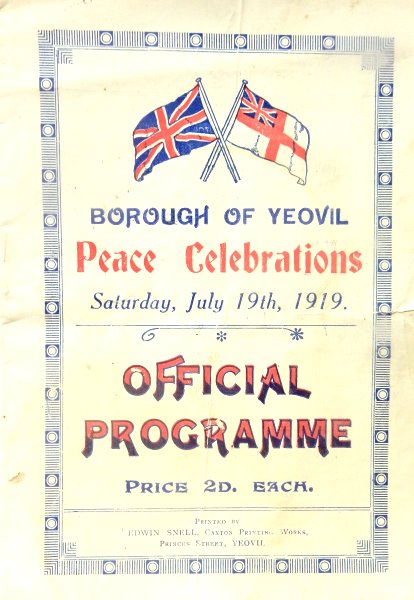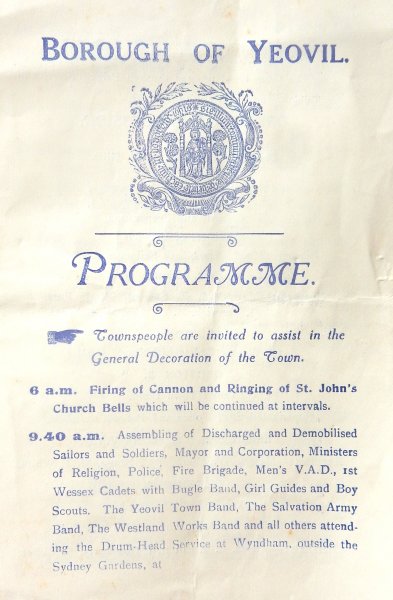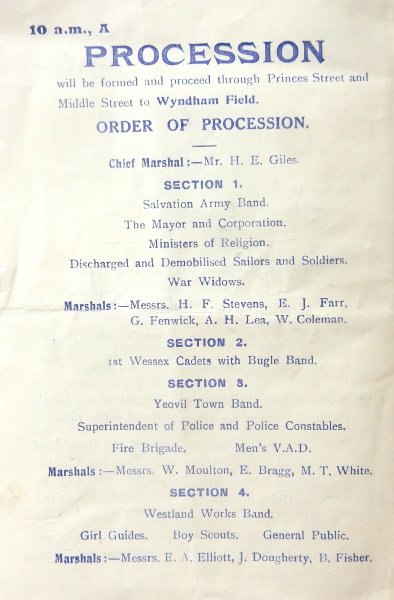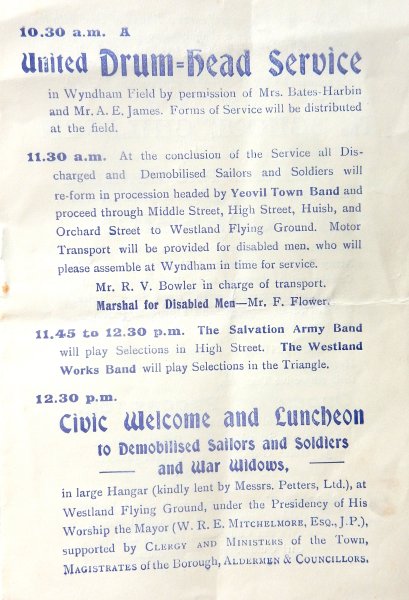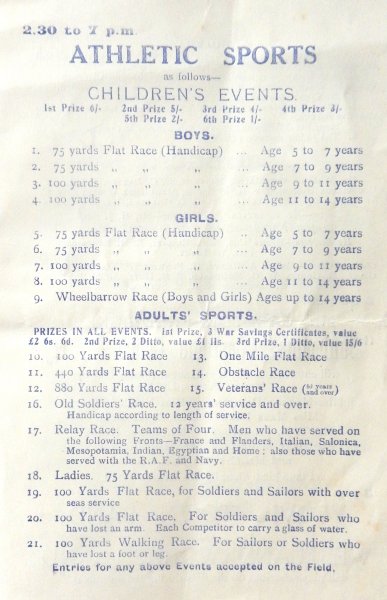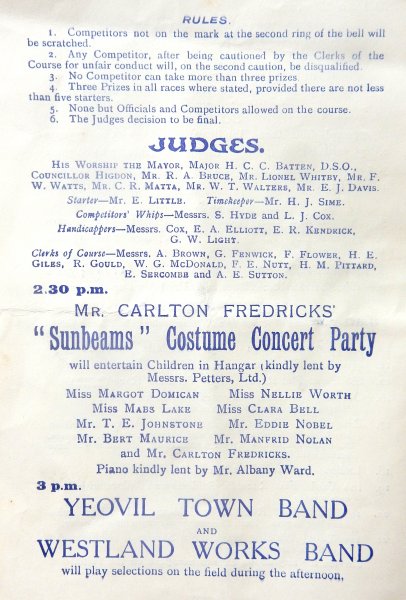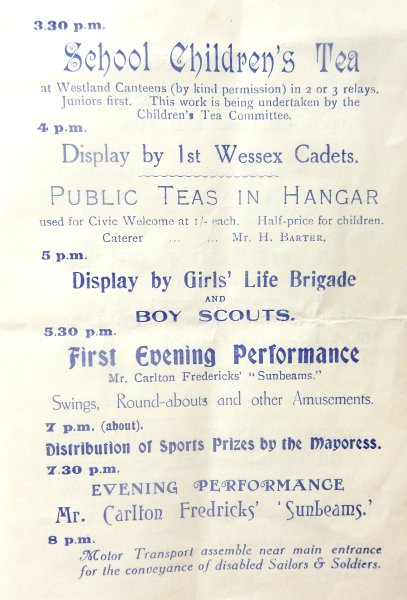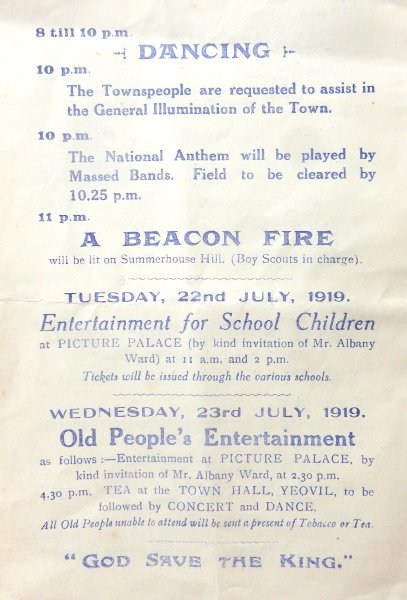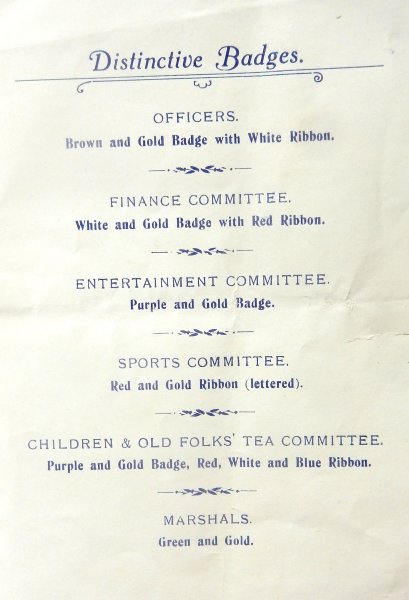Yeovil at War
Peace Day
19 July 1919
The Great War armistice came into effect at 11am on 11 November 1918, the 'eleventh hour of the eleventh day of the eleventh month'. The people of Yeovil, as everywhere else in the UK went 'wild with delight' when it heard the news.
Armistice marked the end of fighting on the Western Front, but formal negotiations at the Paris Peace Conference continued into 1919. The Allies' formal peace treaty with Germany, the Treaty of Versailles, was not officially signed until 28 June.
As negotiations continued, the British government planned a public celebration. The Peace Committee was established to decide how Britain would mark the end of the war. The committee first met in London on 9 May 1919, chaired by the Foreign Secretary, Lord Curzon. Its initial proposal of a four-day August celebration was scaled down and brought forward after the Paris signing. A single day of festivities was planned for 19 July.
On the morning of the 19th July King George V issued a message to the wounded soldiers "To these, the sick and wounded who cannot take part in the festival of victory, I send out greetings and bid them good cheer, assuring them that the wounds and scars so honourable in themselves, inspire in the hearts of their fellow countrymen the warmest feelings of gratitude and respect."
On this day the Cenotaph, a monument to those killed or wounded during the Great War, was unveiled in Whitehall, London, during the first Peace Day celebration. Designed and built by Edwin Lutyens, at the request of Prime Minister David Lloyd George, the Cenotaph (literally “empty tomb” in Greek) was initially a wood and plaster construction created in less than two weeks.
In Yeovil William RE Mitchelmore, being the first of Yeovil's mayors to be elected after the Great War, was known as the "Peace Mayor". Yeovil's thanksgiving service, the "United Drum-Head Service" was conducted by Rev Herbert Cecil Sydenham, the Vicar of Yeovil, and was held in Wyndham Fields. Following the service there was a procession, composed chiefly of some seven hundred ex-servicemen, watched on by great crowds of joyful Yeovilians. The procession through the streets of Yeovil was led by the Town Band and ended up at Westlands where one of the large hangars was used to hold a civic reception.
gallery
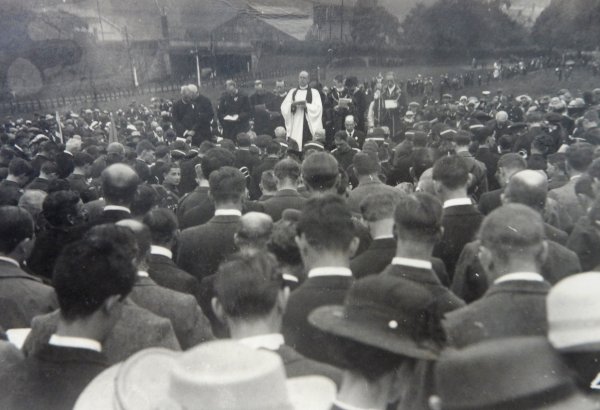
Courtesy of
Jack Sweet
The "United Drum-Head Service", photographed on 19 July 1919, designated 'Peace Day' throughout Britain and the Empire. Yeovil's thanksgiving service was held in Wyndham Fields and Yeovil Town Station is visible in the background.
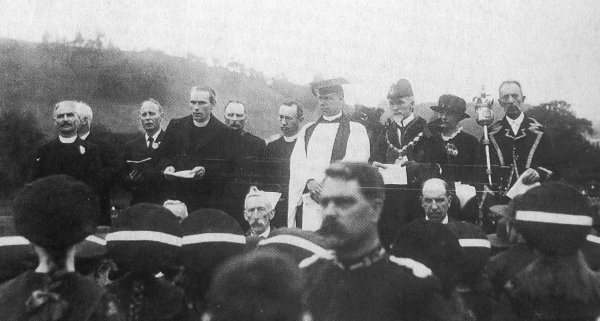
A closer view of the dignitaries seen in the previous photograph. At centre, in his canonicals, is Rev Herbert Cecil Sydenham, the Vicar of Yeovil, next to him in mayoral regalia is mayor William RE Mitchelmore, dubbed the 'Peace Mayor', and at far right is Mace Bearer Henry Jesty. In the foreground, facing the camera, is Salvation Army Band Master WH Bicknell.
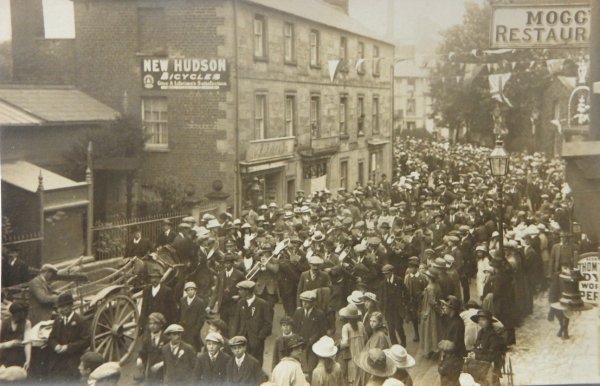
Courtesy of Jack
Sweet
The Yeovil Peace Day Procession, here comprising ex-servicemen, makes its way through Middle Street on 19 July 1919. At centre are Commercial Buildings and off-camera to the right the procession passes the Liberal Club. The series of photographs seen here was published as postcards by Yeovil photographer Walter Rendell. This photo, No 51, shows huge contingent of ex-servicemen led by a marching band.
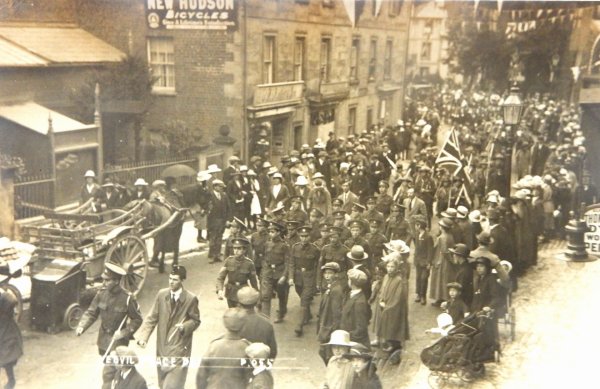
No 55 in this series of photographs of the Peace Day Parade.
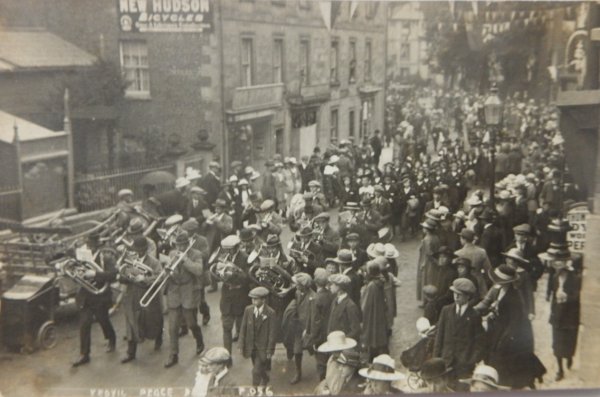
Courtesy of Jack
Sweet
Photo No 56 shows a small band, probably of ex-servicemen, followed by what appear to be a troop of Girl Guides.

Courtesy of Jack
Sweet
This is No 58 in Rendell's series of photographs of the parade. A colourised version.
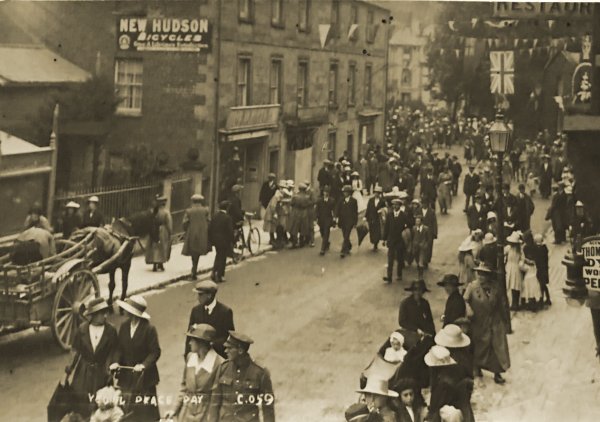
A bit of a lull in the crowd by the time of this photograph - No 59 in the series.

Courtesy of
Betty Barber
(née Bird)
Same place, different part of the procession and, judging by the photo number 61, quite a bit later than the previous photograph and it seems that the on-looking crowd has now joined the procession..

From my
collection
The header of the Western Chronicle's Peace Souvenir. The photograph at left shows the procession of ex-servicemen and that at right shows the Yeovil detachment of Girl Guides in the procession. At centre is a photograph of Mayor WRE Mitchelmore, the 'Peace Mayor'.
![]()
The following Official Programme of the Borough of Yeovil's Peace Celebrations of Saturday 19 July 1919, shown in full, is courtesy of Jack Sweet.
